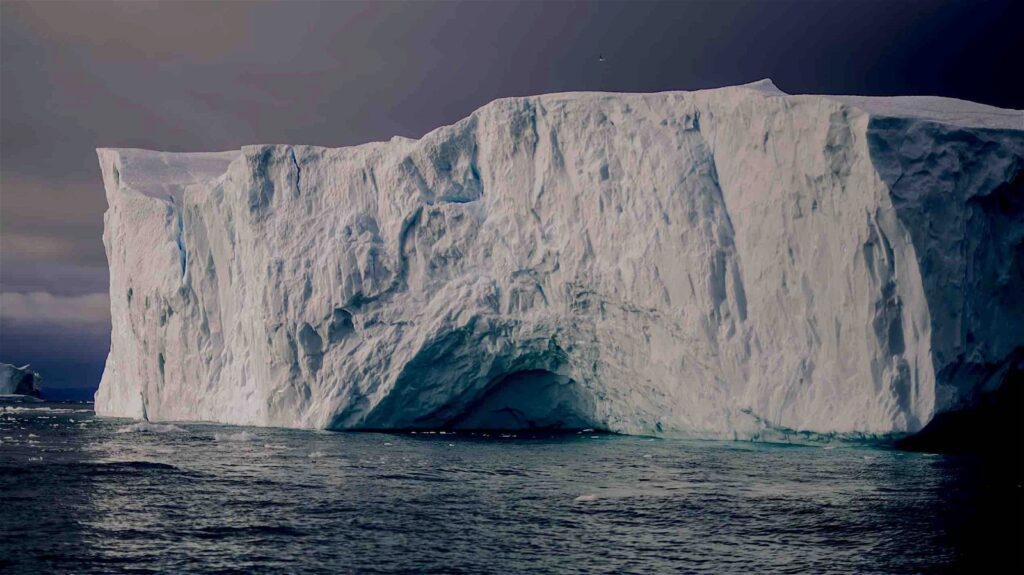Scientists have made an unexpected discovery in the Arctic ice sheet north of Greenland.
As the frozen environment awakens in the spring after months spent shrouded in darkness each year, signs of life begin to return to Greenland’s icy landscape. Several large animals, including the region’s polar bears, arctic terns and musk oxen, begin to stir as sunlight warms the frozen Earth.
Now, scientists have learned that these aren’t the only massive life forms inhabiting Greenland’s ice, although new research is revealing how others have gone undiscovered for so long.
The invisible “giants” of Greenland
Researchers studying Greenland’s icy ecosystem report the new discovery of giant viruses thriving in the region’s Arctic ice. These viruses can help manage local algal blooms and can even reduce the rate at which ice melts.
Lying dormant in the ice for months, Greenland remains in the dark. With the arrival of spring, algae begin to bloom, causing large darkened areas in the ice sheet. This reduces reflected sunlight and causes faster melting, a process that can contribute to global warming.
Laura Perini, a postdoctoral researcher from the Department of Environmental Sciences at Aarhus University, says the giant viruses she and her colleagues have discovered living alongside these arctic algae may act as a natural control mechanism that helps curb blooms. theirs.
“We don’t know much about viruses, but I think they could be useful in mitigating ice melt caused by algal blooms,” Perini said in a statement. “How specific they are and how efficient it would be, we don’t know yet. But by exploring them further, we hope to answer some of these questions.”
At 20 nanometers in size, viruses are generally much smaller than bacteria. However, the viruses that Perini and her colleagues have discovered in Greenland are massive by comparison, capable of growing up to 2.5 micrometers in size, making these “giant” viruses larger than most bacteria.
These invisible giants lurking in the Greenland ice sheet aren’t the only extremely large viruses known to scientists. In 1981, similar massive viruses were discovered in oceanic environments. Like their icy cousins, these giant viruses also infected green ocean algae. Other examples have also been found on earth, and some varieties are even known to live in our bodies.
However, the discovery by Perini and her team marks the first time that giant viruses have been found to thrive on surface ice, subsisting on snow-dwelling microalgae. These curious organisms were found in dark ice, as well as samples of red snow that the team analyzed.
The new findings challenge past notions that the Arctic landscape was barren and lifeless. Scientists today recognize it as an ecosystem where bacteria, filamentous fungi, yeasts, protists and giant viruses thrive and interact.
“There is a whole ecosystem surrounding the algae. In addition to bacteria, filamentous fungi and yeasts, there are protists that eat the algae, different types of fungi that parasitize them, and the giant viruses that we found infecting them,” says Perini.


Although massive compared to other viruses, these newly discovered arctic “giants” are still invisible to the naked eye. They might have gone unnoticed if Perini had not discovered them while analyzing DNA in samples collected by her team, where similar sequences to other known giant viruses were observed.
By extracting and sequencing mRNA from their samples, Perini and her team confirmed that the viruses were present and living in the ice.
Unlike normal viruses, giant viruses can transcribe their DNA into mRNA on their own, while the smaller varieties must rely on hijacking their hosts’ cells. Many questions remain about these extremely large viruses, including the ecological role they play and their specific hosts.
Further studies are expected to reveal how these giant viruses interact in their Arctic ecosystem, and in the coming months, Perini and her team plan to publish additional research on how these viruses infect microalgae, which could help unlock new insights into news for the curious. the invisible giants that thrive in the Greenland ice sheet.
Perini and her team’s paper, “Giant Viral Signatures in the Greenland Ice Sheet,” was published in the journal The microbiome in May.
Micah Hanks is the editor-in-chief and co-founder of The Debrief. He can be contacted by email at micah@thedebrief.org. Follow his work at micahhanks.com and in X: @MicahHanks.

